Join More Than 50,000+ Subscribers and get latest camera news and rumors
NEW CAMERA VIDEOS ON YOUTUBE
|
By admin, on February 25th, 2025
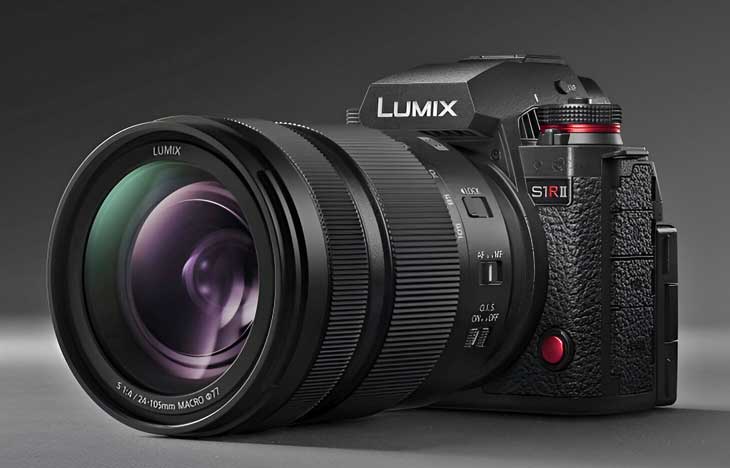
Panasonic announced a new S1 R Mark II camera that features a brand new 44-megapixel sensor, the camera features the recently developed Panasonic L2 processing engine that allows users to capture handheld images up to 177 megapixels with the help of sensor-shift image stabilization technology.
Panasonic S1R Mark II Major Features
- 44.3MP BSI CMOS sensor
- L2 processing engine
- 8K video recording with 14-stop dynamic range
- Improved Open Gate: up to 8.1K/7.2K (firmware update)
- Internal 5.8K recording in Apple ProRes RAW via CFexpress Type B
- Real-time Phase Hybrid AF with AI tracking (faces/eyes)
- Approx. 40 fps continuous shooting with SH pre-burst mode
- 8.0 stops IBIS; 7.0 stops in telephoto (Dual IS 2)
- Advanced EIS for distortion correction without cropping
- Tiltable and swivel screen
- Direct LUT installation via LUMIX Lab mobile app
- New LUMIX Flow app for streamlined workflow
- Integration with Frame.io and Capture One tethering support
Other than that, the camera is very capable of recording 8K video up to 30 frames per second with 14 stops of dynamic range. It also provides 5.8K internal recording in Apple ProRes and ProRAW format directly to a CF Express Type B card. The now features sensor stability IBIS up to 8 stops when combined with dual IS lenses.
The camera features a tiltable and variable display screen that enables creators to use this camera in their workflow, and also with the Lumix Lab app you can directly install LUTs in the camera with integration of third-party software like Frame.io. The workflow of professionals now become much easier.
Get the Panasonic S1R Mark II Camera from Adorama.com | B&H Store | Amazon.com
Specification comparison Panasonic S1R Mark II vs Panasonic S1 H vs Panasonic S1R
| Specification |
S1R II |
S1H |
S1R |
| Model |
S1R II |
S1H |
S1R |
| Sensor Resolution |
44 MP |
24.2 MP |
47.3 MP |
| Sensor Type |
Full-frame CMOS |
Full-frame CMOS |
Full-frame CMOS |
| Shutter Speed (Mechanical) |
1/8000 to 60 sec |
1/8000 to 60 sec |
1/8000 to 60 sec |
| Shutter Speed (Electronic) |
1/32000 to 60 sec |
1/32000 to 60 sec |
1/32000 to 60 sec |
| Continuous Shooting Speed (Mechanical) |
10 fps |
9 fps |
9 fps |
| Continuous Shooting Speed (Electronic) |
40 fps |
9 fps |
9 fps |
| Image Stabilization |
8 stops |
6.5 stops |
6.5 stops |
| Video Capabilities |
Open gate, 8.1K/7.2K Open Gate (via update), 1.5 seconds pre-capture |
6K 24p, 5.9K 30p, 4K 60p, 10-bit color, V-Log/V-Gamut |
4K 60p, 6K PHOTO mode (stills) |
| Price (approximate) |
$3,500 |
$3,500 to $4,000 |
$3,700 |
Panasonic S1R Mark II Official Press Release
Panasonic is proud to introduce the LUMIX S1RII, the latest high-resolution full-frame mirrorless camera in the LUMIX S series.
Equipped with a newly developed 44.3MP BSI CMOS sensor and a high-performance L2 processing engine, this camera delivers impressive photos and videos with the natural colour reproduction acclaimed in LUMIX cameras.
With revolutionary video performance, it is the first LUMIX camera to record 8K video with a 14‑stop dynamic range, expanding your creative possibilities.
The popular Open Gate function has been improved to now record 6.4K—and even 8.1K/7.2K via a future firmware update.
As the first camera in the LUMIX S Series, it supports internal 5.8K recording in Apple ProRes RAW HQ/ProRes RAW format using a CFexpress Type B card, enabling high‑quality video recording with minimal setup without the need for external devices or cables, and providing greater mobility for solo shooting and small‑scale productions.
The improved Real‑time Phase Hybrid AF, now with AI tracking, quickly and accurately detects people’s eyes and faces, and tracks movements smoothly.
With continuous shooting at approximately 40 fps and AF tracking, dynamic subjects can be captured with incredible accuracy and ease. SH pre‑burst mode starts shooting even before you fully press the shutter button, ensuring you don’t miss a shot.
The LUMIX S1RII achieves 8.0 stops of in‑body image stabilization—and 7.0 stops in the telephoto range thanks to Dual IS 2 technology.
Advanced video stabilization includes EIS distortion correction without cropping, reducing peripheral distortion while maintaining the original angle of view. The newly designed, compact body with a tiltable and swivel screen adapts to any working style, making it an excellent choice for those seeking both mobility and creative freedom.
The LUMIX S1RII will be compatible with the LUMIX Lab mobile app, which allows LUTs to be installed directly in the camera, streamlining the post‑production process.
A new LUMIX Flow app will also be introduced to optimize workflow for a variety of projects—such as short films, documentaries, music videos, and corporate promotional materials—offering features from storyboarding and recording to file organization. Additionally, the camera integrates with third‑party software such as Frame.io, and for the first time in a LUMIX camera, supports tethering via Capture One, aiding creators in diverse production situations.
Guided by our philosophy of developing technology that inspires creative passion, the LUMIX S1RII is a next‑generation mirrorless camera built for creators who want to realize their unique vision.
Newly developed matrix and next-generation processor
- It uses a newly developed full-frame BSI CMOS sensor with a resolution of approximately 44.3 MP.
- It features a 177MP (approx.) Handheld High-Resolution mode that precisely captures image detail and depth.
- It offers high-resolution recording that faithfully reproduces texture and fine detail, and for the first time in a LUMIX camera, supports 8K 30p *2 recording with 14 stops *1 of dynamic range.
- Supports internal recording at 5.8K in Apple ProRes RAW HQ / ProRes RAW to CFexpress Type B card.
Improved core performance
- Redefined Real-time Phase Detection Hybrid AF with improved eye and face detection and precise AI-based tracking.
- Improved 8.0-stop *3 in-body image stabilization (BIS) and newly developed EIS video distortion correction without cropping, which stabilizes the image while maintaining the original angle of view.
- High resolution and high-speed continuous shooting, offering high-speed shooting
- approx. 40 fps *4 with the electronic shutter mode “SH”, and approx. 10 fps *4 with the extended mechanical shutter mode “H+ (High Speed Plus)”, allowing you to shoot without having the preview image black out after taking a picture.
Advanced applications that support the production process
Compatibility with Capture One makes it the first LUMIX camera to work seamlessly
with the professional photo editing software commonly used in studio photography.
- Frame.io compatibility enables a seamless transition from recording to editing, as well as cloud file sharing and team collaboration.
- LUMIX Lab app support makes it easy to transfer, edit and personalise the colour of photos and videos, enabling seamless smartphone integration and sharing on social media.
- Support for the new LUMIX Flow app, which helps you create storyboards, control footage while shooting on set, and automatically organize data after shooting, streamlining the video production process.
- LUMIX Mode: Helps you create a storyboard, control footage while shooting on set, and automatically organize data after shooting, streamlining the video production process.
- Smartphone Mode: Enables video creation, such as scriptwriting and editing short fiction, documentaries, or dance films, using only your smartphone.
- External Monitor: Allows you to use your smartphone as an external monitor while recording, allowing you to quickly change and adjust camera settings right on your mobile device.
New DMW-BG2 battery holder
Panasonic introduces the new DMW-BG2 battery grip, designed to make holding the S1RII more comfortable when shooting vertically. The battery in the grip can be swapped while the camera is on. The grip also provides additional support by powering the camera when shooting in more demanding modes.
Additional information:
*1 When Dynamic Range Expansion (Log) is enabled.
*2 8.1K/7.2K Open Gate recording will be available via a software update scheduled for 2025.
*3 8.1K / 7.2K RAW HDMI output will be available via a software update scheduled for 2025.
*4 The continuous shooting speed may become slower depending on various conditions such as the lens in use, aperture, and shutter speed.
*5 Center: 8.0-deg; Peripheral: 7.0-deg. Based on CIPA 2024 standard [Yaw/Pitch/Roll direction: Focus distance f=60 mm when S-R2060 lens is used. 5-axis.]
*6 Center: 7.0-deg; Peripheral: 7.0-deg. Based on CIPA 2024 standard [Yaw/pitch/roll direction: focusing distance f=105 mm when S-R24105 lens is used. 5-axis.]
By admin, on February 25th, 2025
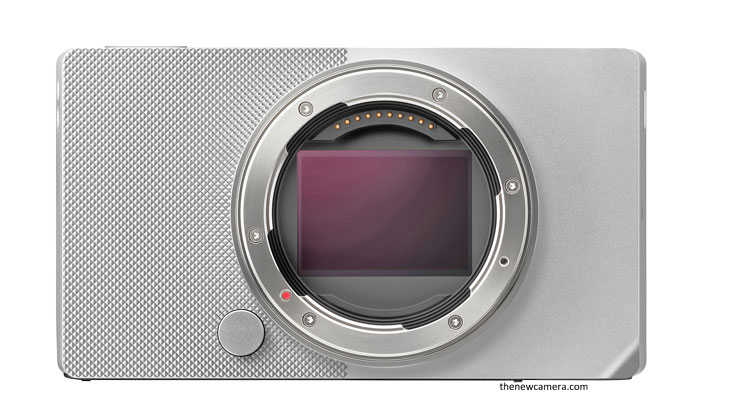
So we have now the Sigma BF camera, but after analyzing the overall core specifications and watching many online reviews, specifically those who have visited Japan by the invite of Sigma, and a lot of reviews have surfaced by the hands of many people out there, so the sum of all those things is mentioned below.
Innovative thing – the breakthrough technology that came along with the Sigma BF camera
The unibody design – the unibody design is a unique design specifically crafted by the engineers of Sigma, a single sheet of aluminum and an unbreakable structure, and with that structure, I am very confident that heat dissipation will not be a big problem for Sigma BF if the sensor, which is not using IBIS mechanism, has its heat sink attached to the body of the camera, then overheating will never be an issue in this camera.
The biggest advantage of this camera is its internal memory – 2330GB of SSD drive inside the camera, so you don’t have to worry about putting extra memory cards in the body. You just have to take out all your data through the USB port of the camera.
So, these two are the biggest advantages that came along with the Sigma BF camera – the new and unique design and the internal memory that we are getting inside the camera.
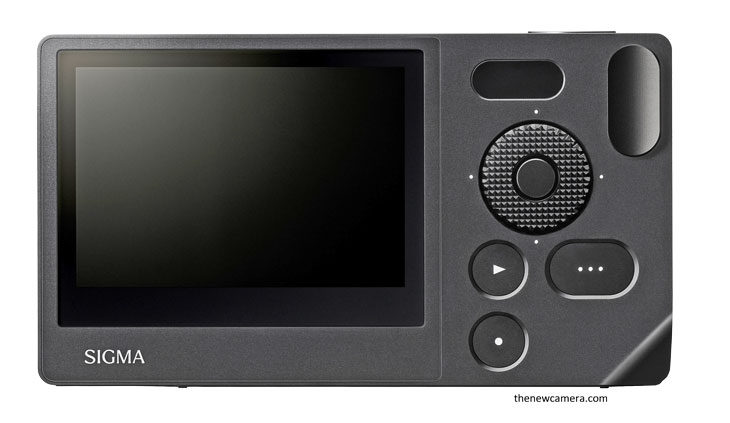
Now, the question is – for whom is this camera made?
So let us consider this camera is made for photographers only.
If you are a photographer, then you have to accept this camera with a very fresh mind since, of course, it doesn’t have extensive manual control over It, which is kind of a thing loved by a professional photographer. Made for beginners with minimum control and a completely new user interface.
Another thing that you will miss in the body design is the variable display screen that nowadays photographers love to have for compositional freedom. +1 more thing that you may miss as a photographer is the presence of an electronic viewfinder and, of course, no hot shoe is there.
Now, let’s dive into the internal core specifications of the camera. We have the same sensor that we have seen in the Panasonic S5II / S5IIX camera, but in S5II and S5IIX, with the presence of a 24-megapixel hybrid CMOS sensor, we also get sensor-shift image stabilization mechanism, which is absent inside the Sigma BF camera. We do not have any IBIS inside the body. Another thing that you will miss as a photographer is the presence of only and only electronic shutter – no mechanical shutter is available right now. One more thing that surprised me while reading the specifications of the camera is the maximum continuous shooting of the camera remains limited to 8 frames per second.
So, it does carry a lot of features, but again, it does have a lot of limitations too, so if you are a photographer, you have to consciously pick this camera with all the limitations it already has inside it.
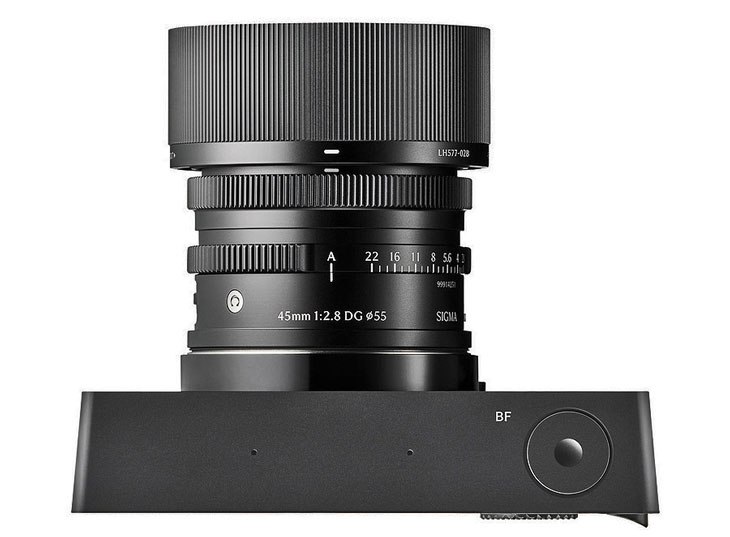
Obviously, this camera is not made for content creators
because it doesn’t carry any vari-angle display screen on the rear side, no content creator can create a video without framing themselves properly. The other two things that are also missing in this camera are the presence of headphone and microphone ports, which are generally present in all the cameras that we get in this price range and which are very essential.
Now finally, the latest analysis is that this camera is made for professional cinematographers since we are able to record 10-bit internal video in 4K 30fps mode. You also can record videos up to 6K resolution, so it is very advanced in terms of video recording capability, but again, we miss the basic ports that should be present in the body of the camera, like having at least a microphone input port. Major ports that a cinematographer may require are missing, and how can a professional cinematographer record high-quality audio when there is no option to do that?
Overall, this particular Sigma BF camera does come with breakthrough technology, a very innovative design, and interesting specifications
but some of the limitations make this camera limited to very specific photographers and video users. So, the camera is good, but due to its set of limitations, the camera is not able to impress a huge mass of photographers or content creators out there. It does need some improvement – maybe in the BF Mark II, we will have some basic upgrades and some more ports that will help us to utilize this camera properly.
By admin, on February 24th, 2025

Sigma today announced the BF camera. The BF camera features a unique aluminum body design, of course, without any grip, but it’s a very rare design. And, of course, rig makers like SmallRig are always ready with some innovative solutions. But apart from this very unique body design, Sigma approached the basics very differently. They have added a 230GB internal memory in this particular camera, so you can record your videos uninterruptedly and continuously for 2 hours, even in 6K with the highest possible settings.
On the specifications side, the camera features a full-frame CMOS sensor with a 24-megapixel resolution. Users can record 6K videos up to 30 frames per second in L-Log.
The camera features a hybrid autofocus sensor for fast autofocusing and an AF sensitivity range from -5 EV to 18 EV @ f/1.4. It has a base ISO of 100.
Maximum ISO sensitivity is expandable. ISO sensitivity goes from 100 to 102400. We have dual base ISO, meaning that in movie mode, you have the base ISO of 320. When you switch to Log, you get the base ISO of 1250, which is highly usable for professional cinematographers. Other than that, we also have an expandable base ISO that starts from 6, 12, 25, and 50 to extract the maximum dynamic range possible from the scene.

The camera has an electronic shutter, not a mechanical shutter. Selectable frame rates are available. The continuous shooting speed of the camera is a maximum of 8 frames per second. In a single burst, you can store up to 2000 JPEG frames and up to 350 RAW DNG frames inside your camera.
The body design is minimal, and the camera uses a lithium-ion battery pack of BP-81, which can capture 260 images on a single charge and support 60 minutes of continuous recording in 6K.
PRESS RELEASE
Announcing the “Radically Simple” Sigma BF camera
Ronkonkoma, New York – SIGMA Corporation of America, the US subsidiary of SIGMA Corporation (CEO: Kazuto Yamaki. Headquarters: Asao-ku, Kawasaki-shi, Kanagawa, Japan) is pleased to announce the Sigma BF, a 24-megapixel full-frame L-Mount camera. The Sigma BF presents an uncompromising new vision for the digital camera. Stripped to the essence but packed with power, innovative yet rooted in the origins of photography, it is designed to accompany you throughout your day and to capture the spontaneous beauty of everyday life. The BF balances performance with simplicity and returns the focus to what matters most: your photographs. The Sigma BF will retail for $1,999 and be available in April 2025.
A radically simple camera that evokes the essence of photography
A full-frame mirrorless camera offering an unprecedented intuitive shooting experience
Staying close to the photographer, the Sigma BF captures the beauty that lies hidden in everyday life, and becomes the catalyst to be aware of that beauty.
The BF focuses on the joy of photography that only a camera as a tool can provide. By simplifying and stripping away all excess elements, this full-frame mirrorless camera redefines the process of taking a photograph as a natural act.
The unique user interface, which provides a new sense of connection between the photographer and the camera in a true seamless unibody, is more intuitive than ever with its pressure-sensitive haptic buttons and dial. The high-definition expression of the approximately 24-megapixel full-frame sensor and the reliable dual autofocus system bring your vision to life.
Key features
Simple, clear, and completely new user interface
The user interface has a completely new information structure compared to conventional digital cameras, with the main shooting-related settings stored on the live view screen, secondary settings in the optional menu, and management functions and detailed settings in the system menu. Users can easily operate the shutter speed, aperture, ISO sensitivity, EV compensation and color mode, along with other important shooting-related elements at the touch of a finger. Combined with the auto setting, the functions of the general shooting mode dial are also covered.
Clear live view and status monitor
The default live view screen displays only the minimum necessary information and can be changed to display no information at all. Since the currently active setting is displayed on the status monitor, the users can concentrate solely on composition and the subject on the live view screen.
Minimal controls and haptics
All controls are integrated into just three buttons, one dial, the shutter release, and the power button. The BF is the first mirrorless camera* to incorporate haptics into its Dial, Center button, Option button, and Playback button, resulting in minimal physical wear. The buttons are always accurate and comfortable to press.
* As of February 2025, by Sigma.
Unibody structure
The BF is the first camera in history* to feature a true unibody, which boasts unprecedented rigidity. Each camera is carved from a single, solid block of aluminum over the course of seven hours. The reliable, comfortable weight of its seamless all-metal body harmonizes perfectly with any attached lens.
* As of February 2025, by Sigma.
Internal storage
The BF features 230 GB of internal memory, capable of storing more than 14,000 JPEG files, 4,300 uncompressed RAW images or 2.5 hours of video at the highest-quality setting, with the USB-C port offering fast charging and data-transfer speeds.
Various color modes
Thirteen different color modes are available to open up new avenues of creativity. The modes range from unique options like Teal and Orange, Powder Blue, and Warm Gold to creative yet versatile options such as Rich, and Calm.
Evolved autofocus
A hybrid autofocus system combining image phase detection and contrast detection utilizes state-of-the-art algorithms to capture subjects accurately and reliably. In addition to people, dogs and cats can be detected in the subject detection mode.
Video shooting (6K, L-Log)
The BF supports high-resolution 6K and L-Log recording, enabling video production that takes advantage of the wide dynamic range of a full-frame sensor.
Equipped with L-Mount
The L-Mount lens mount allows the camera to be used with a wide variety of interchangeable lenses for mirrorless cameras from Sigma as well as other L-Mount Alliance partners.
By admin, on February 23rd, 2025
If ur more into vlogging and the assumption that prices are equal in your location (yes they are mostly), the Canon PowerShot V1 is more recommended for its advanced video features (4K 60p, C-Log 3, cooling fan), portability, and ease of use, which align well with typical day to day vlogging needs. However, if you give priority to superior image, Video quality, and lens flexibility (that’s more important for professionals) for potential expansion into photography, the Sony ZV-E10 is a better choice, especially with its larger APS-C BSI CMOS sensor. Consider your shooting environment (e.g., low light for Sony) and future content plans (e.g., lens variety for Sony) to finalize your decision.
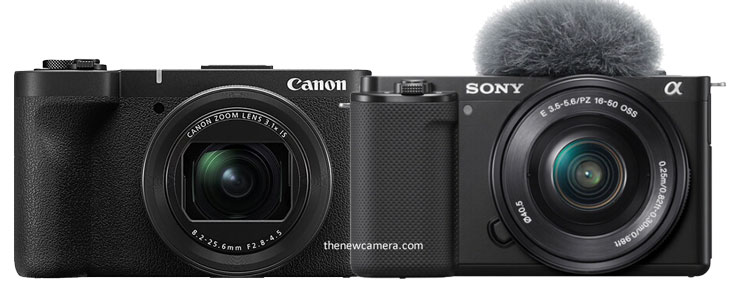
Conclusion / Verdict
Both cameras are made for content creators, but they approach different requirements fields. The Sony ZV-E10 camera gives you low-light flexibility and the opportunity to use a range of available lenses for E-mount. When that happens, you can create as much depth as you want to create cinematic footage by adding lenses like Sigma 30mm f/1.4 or Sigma 56mm f/1.4 in your ZV-E10 camera.
Now, Canon made the Canon V1 camera highly compact and highly portable with advanced video features like 4K 60 FPS recording with Log support. C-Log 3 is also available for color grading, and the camera records 10-bit video, so overall, it gives you flexibility and portability. The only thing that limits you in V1 is the low-light performance since it has a slightly smaller sensor than what you are getting in the Sony ZV-E10.
Another factor that differentiates between the two is the presence of an FSI sensor in Canon, whereas in Sony, we have the BSI CMOS sensor. So technically, in Sony, we will have a kind of better video quality, but again, we highly recommend the Canon V1 camera for lifestyle and travel bloggers.
Must Watch – Best Lense for Sony ZV-E10 Camera
A Canon V1 Camera is recommended for
Take a look at the specific work areas we are recommending the Canon V1 over the Sony ZV-E10 camera,
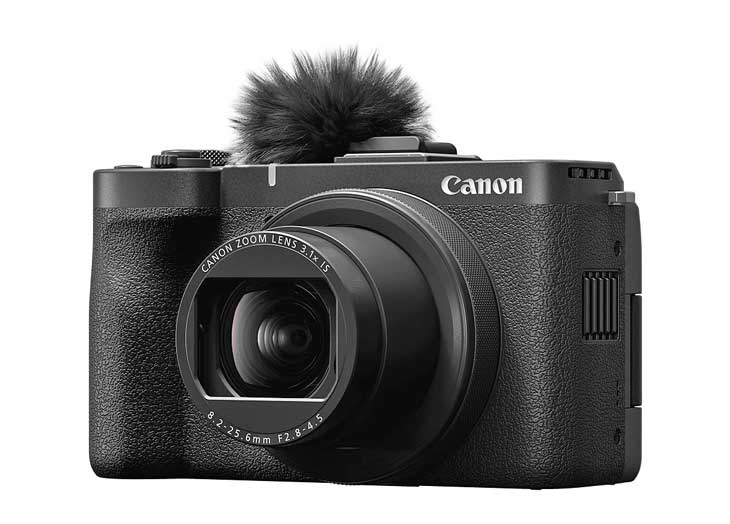
1. Lifestyle and Travel Bloggers
Now, this Canon V1 camera is perfect for travel bloggers or content creators who generally create lifestyle vlogs, hold their cameras in their hands, and are ready to go anywhere.
One of the biggest advantages that we should talk about with the Canon V1 is its portability, and the built-in fan is one of the major advantages of a compact camera.
Even if you are creating your vlogs in extremely hot and humid conditions, the built-in fan of the camera will keep the camera cool. At the same time, the camera enables Canon C-Log recording at 4K 30 FPS. You get a maximum of 5.7K oversampled video footage, so if you have a dedicated editor who can extract the maximum quality from this camera if you have the time and skill, then this camera is one of the best tools for travel bloggers or daily life content creators.
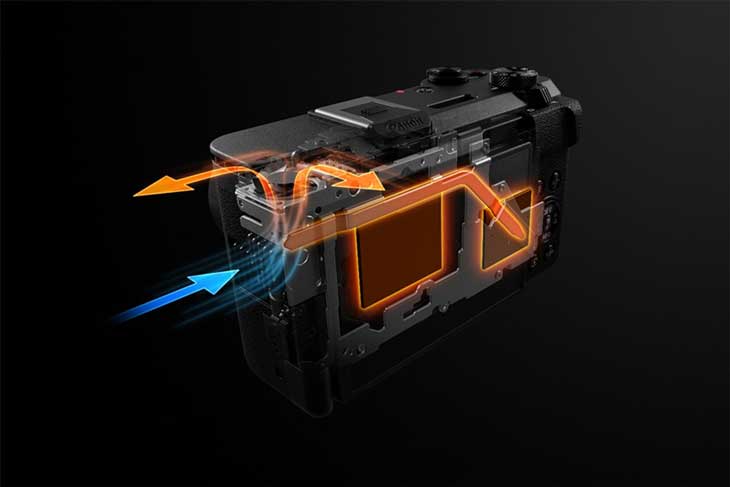
2. Canon V1 for Longer Video Recording
Another good use of the Canon V1 camera is creating long podcast videos as the camera will not overheat due to the internal fan present inside it. It supports using 4K 60fps for a prolonged time, although you are not able to use max aperture-based lenses—that’s the limitation we have. But when the priority is more important than the depth, it means the artist wants to record as long as possible from the camera, then we have no option.
Comparative Table: Key Specifications
| Feature |
Sony ZV-E10 |
Canon PowerShot V1 |
| Sensor Size |
APS-C, 24.2MP, 23.5×15.6mm |
1.4-inch, ~22.3MP, 18.63×12.42mm |
| Type of Sensors |
BSI |
FSI |
| Video Capabilities |
4K 30p (crop), Full HD 120p |
4K 30p full, 4K 60p (crop) |
| Log |
8 Bit, HLG, Slog2 and Slog3 |
10 Bit, CLog3 |
| Lens |
Interchangeable E-mount |
Fixed 16-50mm equiv., F2.8-4.5 |
| Autofocus |
Fast Hybrid AF |
Dual Pixel AF II |
| LCD |
3-inch vari-angle touchscreen |
3-inch vari-angle touchscreen |
| Audio |
Directional mic, 3.5mm jacks |
Stereo mics, 3.5mm jacks likely |
| Portability |
Larger, with lens |
Compact, highly portable |
| Battery Life |
~440 shots, NP-FW50 |
Extended with cooling fan, TBD |
| Stabilization |
IBIS or lens-based, varies |
5EV in-body image stabilization |
| Recording Time |
Limited by heat |
Extended with cooling fan |
| Connectivity |
Wi-Fi, likely Bluetooth |
Wi-Fi, likely Bluetooth |
| Ease of Use |
More controls, slight learning curve |
Simple, fixed lens, beginner-friendly |
| Price (Typical) |
$598 body, $698 with lens |
Expected $899 |
| Future Expandability |
High, with lens options |
Limited, fixed lens |
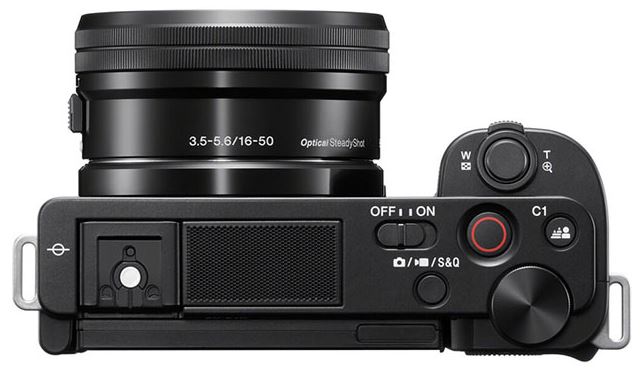
Reasons to buy the Sony ZV-E10 Camera
Take a look at the reason for selecting the Sony ZV-E10 camera over the Canon V1.
1. Freedom to select your LENS
The biggest reason for the selection of the ZV-E10 camera is lens flexibility. This is one of the major advantages associated with the ZV-E10. If you are creating talking head videos, then you can use a Sigma 30mm f/1.4 lens to have the best possible cinematic output for your content. And if you are creating handheld vlogs, then you can use lenses like Sony 11mm f/1.8 or the Viltrox 13mm f/1.4 to generate the best possible content even in low-light conditions with maximum possible cinematic depth.
That is the biggest freedom we have with the Sony ZV-E10 camera, but that comes with a price. You have to pay more and more for lenses depending upon your requirements for a camera.
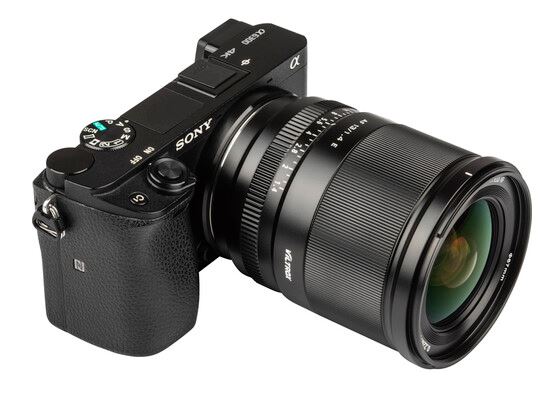 Sony ZV-E10 using VILTROX Lens
2. Gyro Image Stabilization
That’s an added advantage, and if you love to have completely stabilized videos in your camera, then the ZV-E10 is still a great option for you. But it’s not that easy. First, you have to capture the footage, then you have to apply it in Sony’s Catalyst Browse software.
Sony ZV-E10 Recommended for:
- Vlogging with high-quality stills: Its APS-C sensor + Interchangeable Lenses
- In-room / office Solo content creation Like product showcase mode make it suitable for solo creators.
- Low-light photography and video:
- Travel photography with interchangeable lenses: Lens flexibility allows for diverse shooting scenarios during travel.
- Customization and control for advanced users: More settings and More lens options
Canon PowerShot V1 Recommended for:
- Portability and simplicity: Ideal for users who prefer compact cameras with highest possible quality
- Advanced daily / Travel vlogging with 4K 60p and color grading:
- Documentary and travel videography
- Extended recording: Built-in FAN for a long podcast / outdoor shoot
- Street and candid photography: Best for street shoot with 4 STOPS of OIS
- On-the-go content creation: Highly portable, making it easy to carry for spontaneous shooting.
- User-friendly interface with fixed lens: Simple operation suits users who prefer not to deal with lens changes.
Price Consideration
Typically, the Sony ZV-E10 body only is priced at around $598, with a kit including a 16-50mm lens at about $698, while the Canon PowerShot V1 is expected at $899.
Sony ZV-E10 Amazon.com – B&H Store
By admin, on February 22nd, 2025
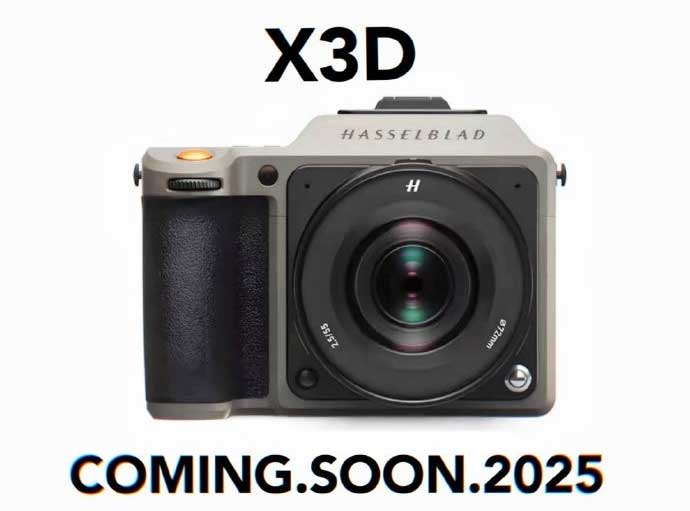
The new medium format camera X3D is about to arrive from Hasselblad, now how we came to know about it? It’s directly coming from Chinese sources. Initially, Hasselblad completed its FCC registration with the model code HB 722, registered on December 2024, and the confidentiality period is 180 days, which is around 6 months. As per the rumors, expect a new X3D medium format camera to arrive.
The real excitement is about what’s coming inside the new X3D camera. It will be using a 150-megapixel Sony medium format sensor or 250 MP. As usual, before the announcement, we generally get a lot of leaks related to the upcoming camera, including its specifications and images, and we will be posting it as soon as we get any.
Get LIVE RUMORS –> FACEBOOK | TWITTER (X) | INSTAGRAM to get live news + Hasselblad Rumors
By admin, on February 21st, 2025
So now, we have the sample images of the recently announced Canon V1 camera. Let’s have a look at these full-size, high-resolution sample images, and you can download them to explore further on your computer or smartphone.
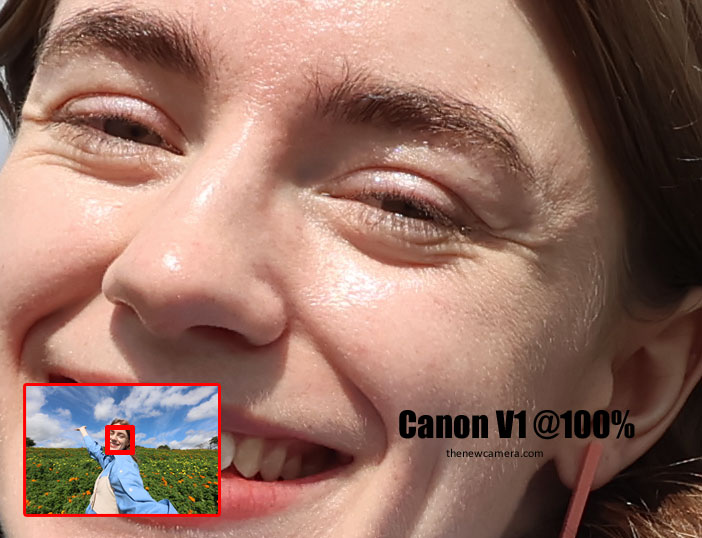
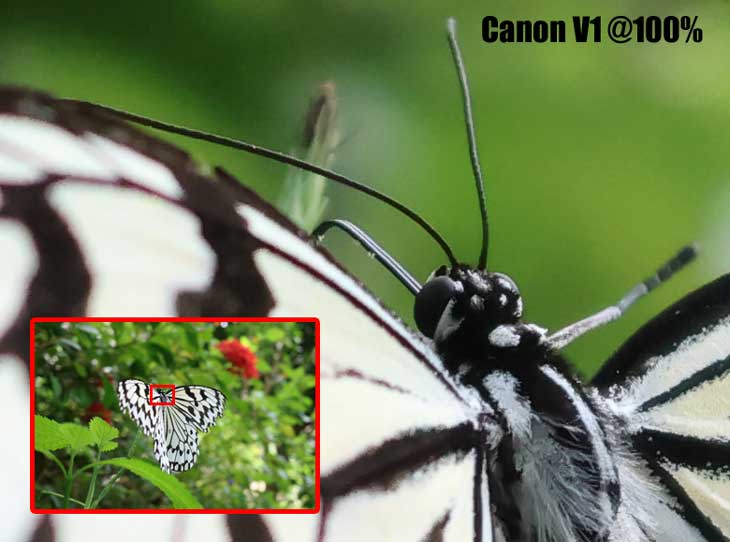
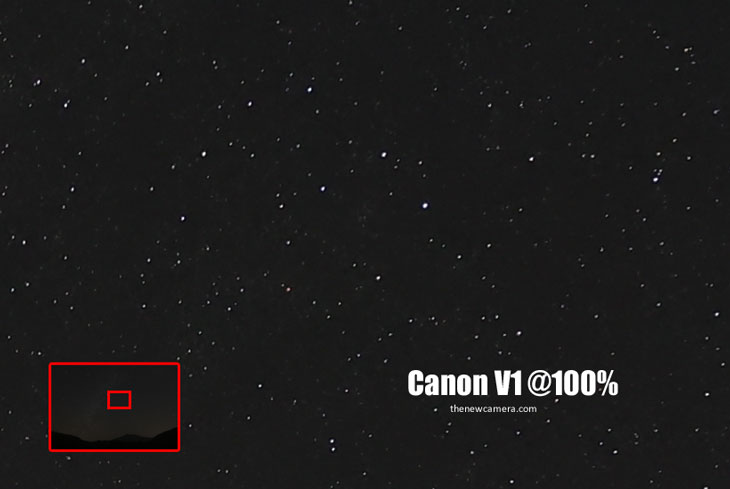
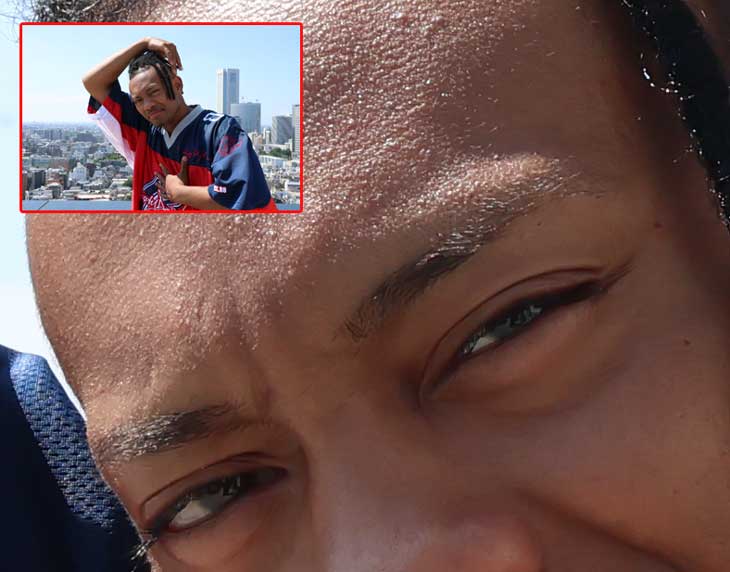
See and download full-resolution samples from here
Get LIVE RUMORS –> FACEBOOK | TWITTER | INSTAGRAM to get live news + Canon rumors 24X7
By admin, on February 20th, 2025

Canon announced the V1 compact camera. The camera features enhanced video core specifications and a built-in fan that has never existed in any compact camera, so it’s very exciting to see how compacts are evolving.
So now, we have a 22-megapixel Dual Pixel CMOS autofocus sensor of 1.4 inches, which is somewhat similar in size to a Micro Four Thirds format sensor. The lens is 16-50mm f/2.8-4.5 with a built-in three-stop ND filter.

The camera captures 4K 30 FPS video from 5.7K, meaning when you capture 4K 30 FPS, you get the highest resolution possible. However, when you switch to 4K 60 FPS, the camera applies a 1.4x crop in the video image and switches to a 1:1 pixel capture ratio, so that’s not the highest quality output when using the 4K 60 FPS mode.
For still photography, the camera is perfect—you can capture up to 30 frames per second in electronic shutter mode. You also get a fully articulated vari-angle display screen, making it great for photographers as well as content creators.
As mentioned in the body, we have a cooling fan vent, a very good hand grip, headphone and microphone sockets, as well as a multifunctional hot shoe for flash and audio connectors.
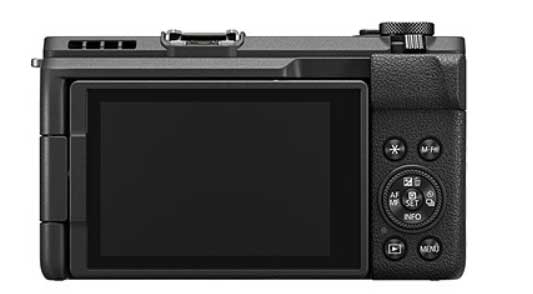
Canon V1 Major Specification
- Sensor: 1.4-inch CMOS, 3:2 for video.
- Pixels: 22.3 million for stills.
- Processor: DIGIC X, fast and sharp.
- Video: 4K 60fps with Canon Log 3.
- Autofocus: Dual Pixel CMOS AF II, snappy.
- Lens: 16-50mm (photo), 17-52mm (video).
- Aperture: Likely f/1.8-4.0.
- ISO: Up to 32,000 for stills.
- Shutter: 1/2000-30s (mech), 1/16000-30s (elec).
- Burst: 15fps mech, 30fps elec.
- Cooling: Fan for 2+ hours of 4K.
- Screen: 3-inch vari-angle, 1M dots.
- Hot Shoe: Multi-function, no flash.
- ND Filter: Built-in, 3-stop.
- Audio: 3.5mm mic and headphone jacks.
- HDMI: Yes, for external output.
- Storage: Single SD (UHS-I).
- Video Features: “Moods” and demo mode.
- Connectivity: USB-C charge/data.
- Price: ~$990 USD (148,500 yen Japan).
Release of the flagship model of the “PowerShot V Series,” the “PowerShot V1” – Full-fledged video and still image functions meet the wide range of needs of creators
Canon V1 Press Release
The PowerShot V1 is the second compact digital camera in the PowerShot V series, which allows users to enjoy full-scale video shooting, following the Vlog camera PowerShot V10 (released in June 2023). Compared to the 1.0-type sensor installed in a normal compact digital camera, the 1.4-type CMOS sensor is about twice the area, achieving high image quality and high sensitivity. In 35mm equivalent, it covers a zoom range equivalent to a focal length of about 16mm to 50mm *1 , and is compatible with a wide range of scenes such as selfies with multiple people, snapshots, and Vlogs. In addition, it combines the functions required by creators, such as high-performance AF and a variety of shooting modes, with a compact body, making it easy to shoot full-scale videos and still images. Canon will continue to expand its models that can both shoot full-scale videos and still images to meet the needs of a variety of users.
Main features
An integrated lens camera that combines professional photography performance with a compact body
The combination of a 1.4-inch CMOS sensor with a maximum effective pixel count of approximately 22.3 million pixels *2 , the first Canon compact digital camera to be equipped with the DIGIC X image engine, achieves a maximum standard ISO sensitivity of 32,000 (when shooting still images). Canon’s proprietary AF system, Dual Pixel CMOS AF II for PowerShot *3 , also achieves high-speed, high-precision AF. Furthermore, the inclusion of the Eye Detection *4 function makes it possible to detect the eyes of animals, whose movements are difficult to predict, in addition to people, making it easy to focus when shooting. With full-fledged shooting performance packed into a compact body, you can carry it around with you on trips and enjoy shooting.
Video recording functions that allow for greater freedom in video expression, including the incorporation of a cooling fan
The camera is equipped with a cooling fan inside, which efficiently releases heat, reducing the impact of temperature rise on video recording time. In addition to realizing 4K crop/60P video recording, it supports “Canon Log 3”, allowing recording with rich 10-bit gradation and excellent color reproduction. Furthermore, shooting modes such as “Review Video”, which is suitable for product reviews, and “Image Stabilization Video”, which is effective for handheld shooting, *5 make video recording comfortable.
High-speed continuous shooting at up to 30 frames per second ensures you never miss a subject, and still image shooting functions enable a wide range of creative expression
When using the electronic shutter, continuous shooting at up to 30 frames per second is possible, making it possible to capture fast-moving subjects. In addition, the camera automatically recognizes the scene and supports difficult scenes such as night scenes and backlit scenes with the “Advanced A+” mode, and “Creative Filters” allow for impressive shots such as diorama and toy camera style shots, and many other functions that enable rich photographic expression.
Get LIVE RUMORS –> FACEBOOK | TWITTER | INSTAGRAM to get live news + Canon rumors 24X7
|
KEEP THIS BLOG ALIVE - Support New Camera Buy Canon Lenses, Buy Music CD or Digital Camera at amazon it helps this site, and you do not pay anything extra, it is just a way to help support this site.

|






















